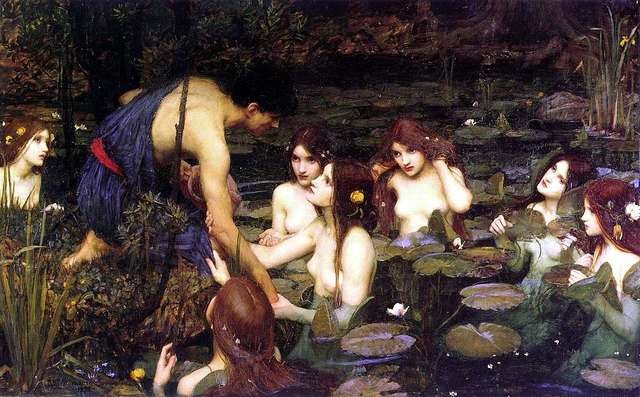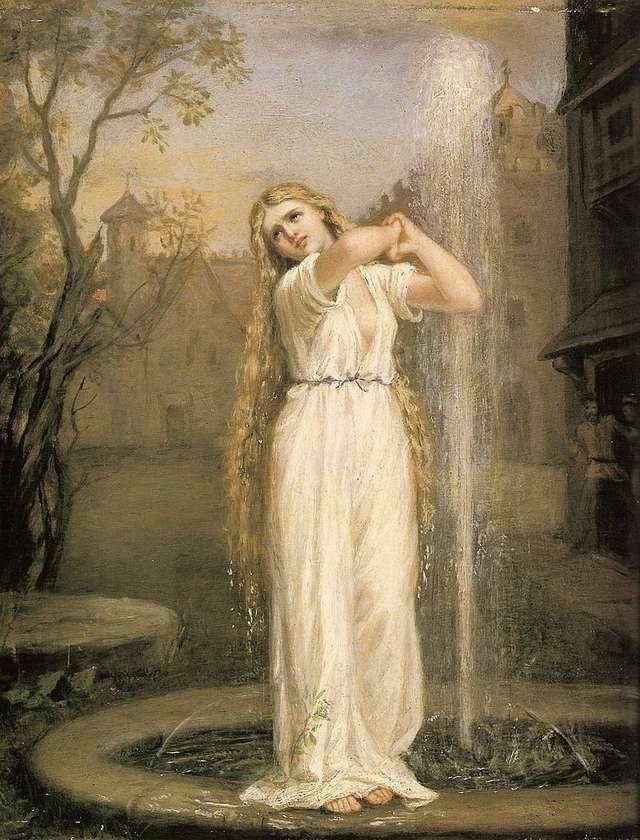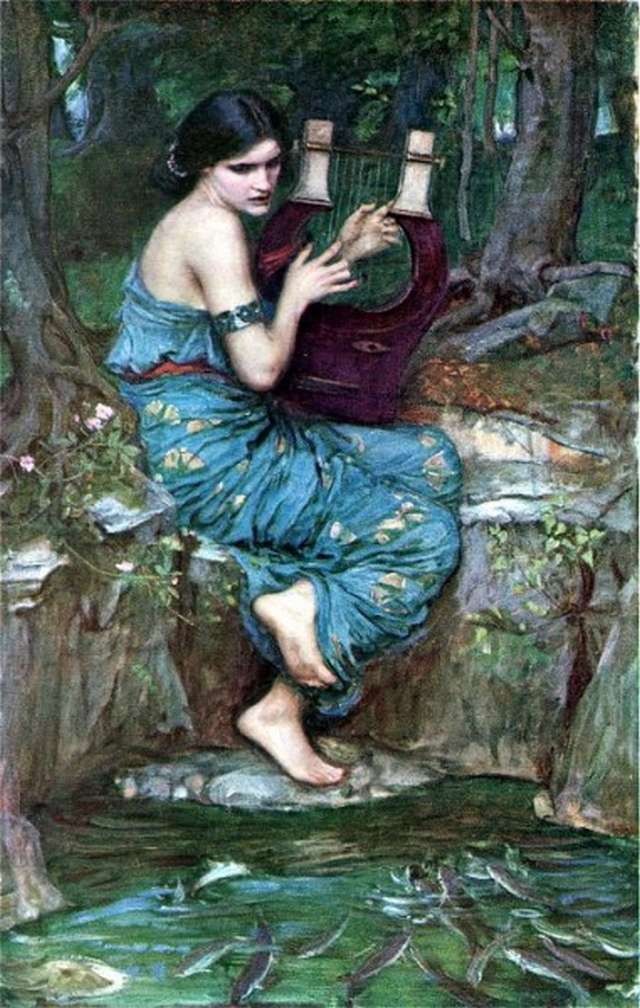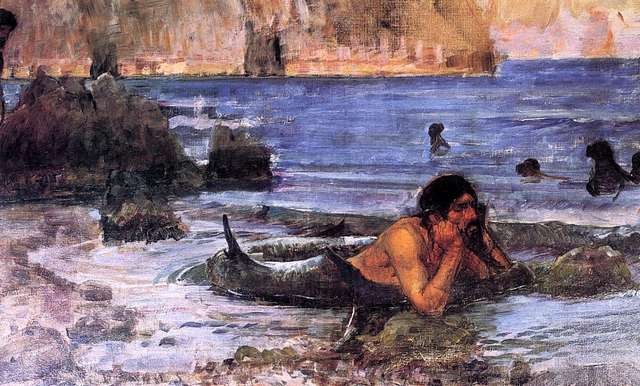John William Waterhouse: Mermaid Paintings
Mermaids impressed many artists, but it is hard to find somebody so influential as John William Waterhouse (1849–1917), who loved mythological themes and obviously enjoyed in portraying charming,
mysterious and dangerous women - fatal women, if I may say.
Mermaids, sirens, water nymphs and all their relatives are certainly among Waterhouse's favorite objects. Maybe because he has water in his name?

Waterhouse is considered as Pre-Raphaelite by style with some influences from Impressionism. He mostly worked with oil on canvas and his favorite objects were dying women near water. Waterhouse often used the same story, theme or scene several times, not just because his technique evolved with years, but also because he liked to explore the chosen scene and present it in different ways.
The picture on the left is a study for one of his most famous works titled Hylas and the Nymps and below you can see the final result, made in 1896 and displayed in Manchester Art Gallery.

Naids were water nymphs closely associated with different bodies of fresh waters like brooks, fountains, lagoons, lakes, marshes, ponds, rivers, springs, streams and wells. Waterhous made an oil painting on canvass with the similar theme in 1893.
We can see Naiad approaching Hylas in sleep. This work is known by two different titles: Hylas and the Nymph or just simple The Naiad. It can be seen in London's New Gallery.

Hylas was not the only character in Greek mythology, who got into trouble in water. Odyssey tried his luck with sirens as well. Waterhouse portrayed this famous scene from Homer's epic in next painting in 1891. The original is hanging in victoria Gallery in Melbourne.

Sirens fascinated Waterhouse from the very beginning of his artistic career. He even originally intended to submit the next painting to Royal Academy as his graduate work, but he managed to finish Ophelia (another favorite subject) before. Well, here is The Siren from 1900. By the way, the estimated value of this painting is between one and two million dollars.
We should also add the sirens are often confused with mermaids, but they are actually completely different species. While mermaids are half women half fish, sirens are half women and half birds, what is clearly seen on the painting above.
We suggest to read full article about sirens.
There is more. Naiads were water nymphs in Greek mythology which were associated with different bodies of fresh water: brooks, fountains, lakes, marshes, ponds, rivers, springs, streams and
wells.
This particular Naiad lured Hylas. The title is Naiad, oil painting on canvass dates from 1893 and is displayed in New Gallery in London.

Another famous painting by Waterhouse is titled Nymphs Finding the Head of Orpheus. This painting was finished in 1900 and is in private collection, just like The Siren.

The Mermaid from 1901 is one of the most known paintings by J. W. Waterhouse.

The most know mermaid in the world is without doubt The Little Mermaid, title character from Andersen's popular fairy tale. Most people don't know this is not original story. Andersen found inspiration in Friedrich de la Motte Fouque's novel Undine.
Waterhouse painted her as well. It's one of his earliest paintings, dated 1872.

Next painting is one of the last Waterhouse paintings. It seems he still didn't get bored with the theme of the ladies by water. He made it in 1911 and titled it The Charmer. This young woman is not presented as a supernatural being, we simply see a young woman with a harp, sitting at the water, but it is clear she is charming fish.
It is obvious we are dealing with some kind of witch.

We will conclude our journey into the Waterhouse's imaginary world of mermaids with a painting of merman. Yes, he loved to paint ladies, but in this case we can meet a man with a fish tail too.

 Fairy Land
The World of
Magical Creatures
Fairy Land
The World of
Magical Creatures